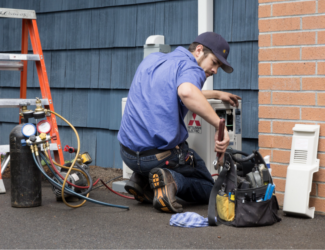
Integrated Resource Plan (IRP)
The Integrated Resource Plan is a long-term strategy that documents how the PUD’s power resources will support customer needs, regulatory compliance, resource availability, and a changing environment over a 20-year time period. It is updated every two years.
The 2025 IRP Draft was released on Oct 13, 2025 after a two-year development process with feedback from customers, subject matter experts and the PUD’s Board of Commissioners. The 2025 IRP is a comprehensive study with new results that reflect the changing environment.
For the first time, the 2025 IRP reflects an Oct. 1, 2025 change in BPA Power and Transmission products in long-term planning as well as additional details on the Post-2028 BPA Provider of Choice Power contract framework. While these changes don’t significantly change the PUD’s resource investment plans, they do provide new context for those plans and provide an updated strategy for how the PUD can meet future needs while maintaining flexibility to adapt to changing conditions.
The study expects moderate load growth and increasing regulatory requirements over the 20-year study period marked by several transitions between policy environments. The PUD plans to meet these needs with a diversified portfolio of resources, primarily conservation and clean energy resources. The PUD’s portfolio additions are increasingly informed by the regulatory environment through the study period, with Washington’s Clean Energy Transformation Act (CETA) expected to be the primary driver of resource acquisition after 2030.
The PUD utilized an extensive public process to inform the development of the 2025 IRP. This process was intended to understand the perspectives of customers, incorporate analysis related to customers’ topics of interest, and provide stakeholder transparency throughout the planning process. The team hosted open houses, virtual meetings, a listening session, and engaged with customers at the PUD’s inaugural Energy Block Party.
The Clean Energy Implementation Plan (CEIP) is published every four years as required by Washington’s CETA. The CEIP contains plans on how the PUD will meet near-term CETA policy and regulatory objectives, and establishes targets and actions for conservation, demand response, and clean energy. The CEIP identifies highly impacted communities and vulnerable populations in the PUD’s service territory that may be impacted by resource decisions of the PUD and assesses the impacts of specific actions on those identified communities. Public engagement is an essential part of this document, and a successful public outreach strategy led the development of the 2025 CEIP.
The 2025 Draft and 2025 CEIP Draft are available below.
If you have feedback or comments, please share them with us via e-mail at irp@snopud.com.






